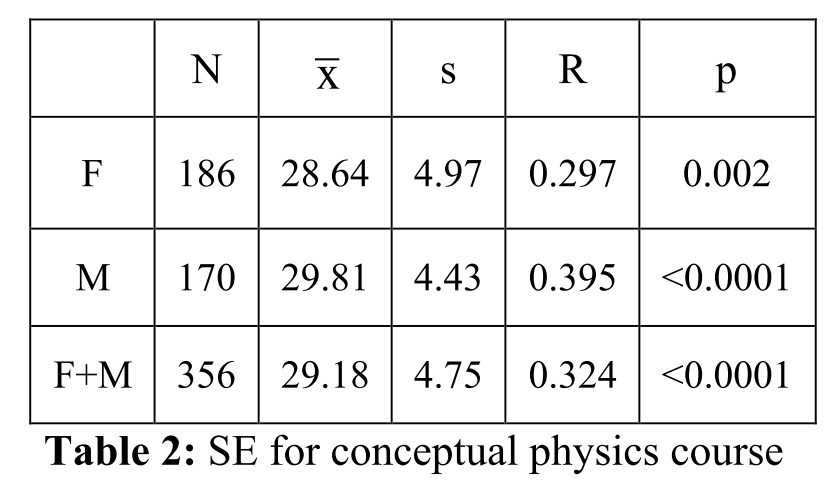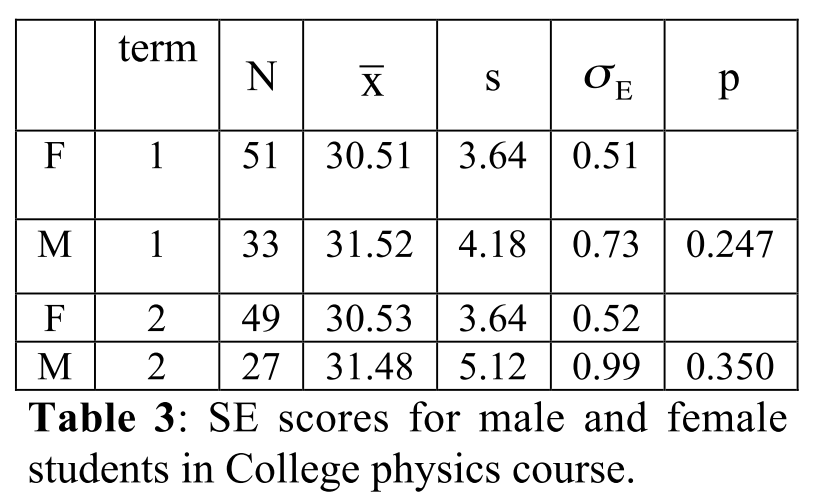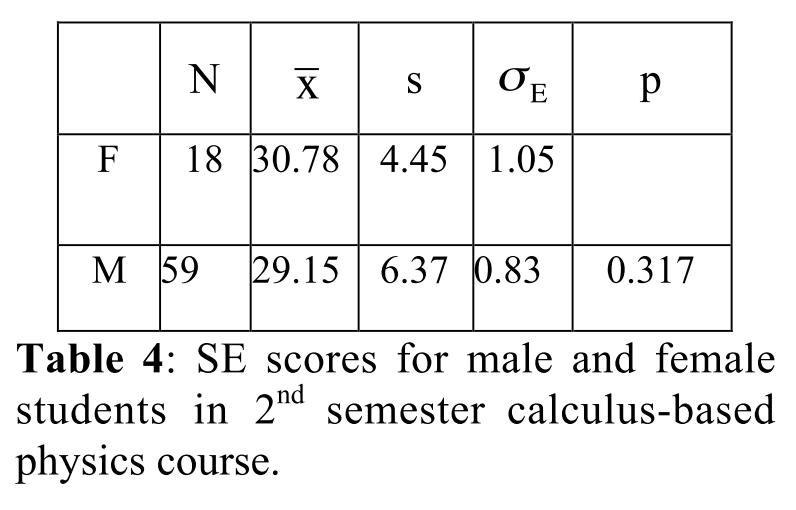Developed by Kimberly A. Shaw
| Purpose | To examine the relationship between physics self-efficacy and student performance in introductory physics classrooms. |
|---|---|
| Format | Agree/disagree |
| Duration | 5 min |
| Focus | Beliefs / Attitudes (self-efficacy) |
| Level | Intro college |
I can solve for the variable r in the expression F = Gm1m2/r2
Strongly Disagree Disagree Neutral Agree Strongly Agree
more details
This is the third highest level of research validation, corresponding to at least 3 of the validation categories below.
Research Validation Summary
Based on Research Into:
- Student thinking
Studied Using:
- Student interviews
- Expert review
- Appropriate statistical analysis
Research Conducted:
- At multiple institutions
- By multiple research groups
- Peer-reviewed publication
Based on a literature review, the developers created an 8 question pilot version of the SEP where the questions were modeled after self-efficacy questions from surveys in other disciplines. The questions underwent expert review and were revised. The SEP was tested with over 500 students, and the results are published in one peer-reviewed paper.
References
- K. Shaw, The Development of a Physics Self-Efficacy Instrument for Use in the Introductory Classroom, presented at the Physics Education Research Conference 2003, Madison, WI, 2003.
PhysPort provides translations of assessments as a service to our users, but does not endorse the accuracy or validity of translations. Assessments validated for one language and culture may not be valid for other languages and cultures.
| Language | Translator(s) | |
|---|---|---|
| Chinese | Junpeng Zhang |
If you know of a translation that we don't have yet, or if you would like to translate this assessment, please contact us!
| Typical Results |
|---|
Typical scores on the SEP from Shaw 2004 for males and females in a conceptual physics course (Table 2), two terms of college physics courses (Table 3) and a calculus-based second semester physics course (Table 4). In conceptual physics, male students had a higher mean score than female students. In college physics and calculus-based physics, there is no significant difference in responses between male and female students.
|
The latest version of the SEP, released in 2004, is the pilot version (version P).






